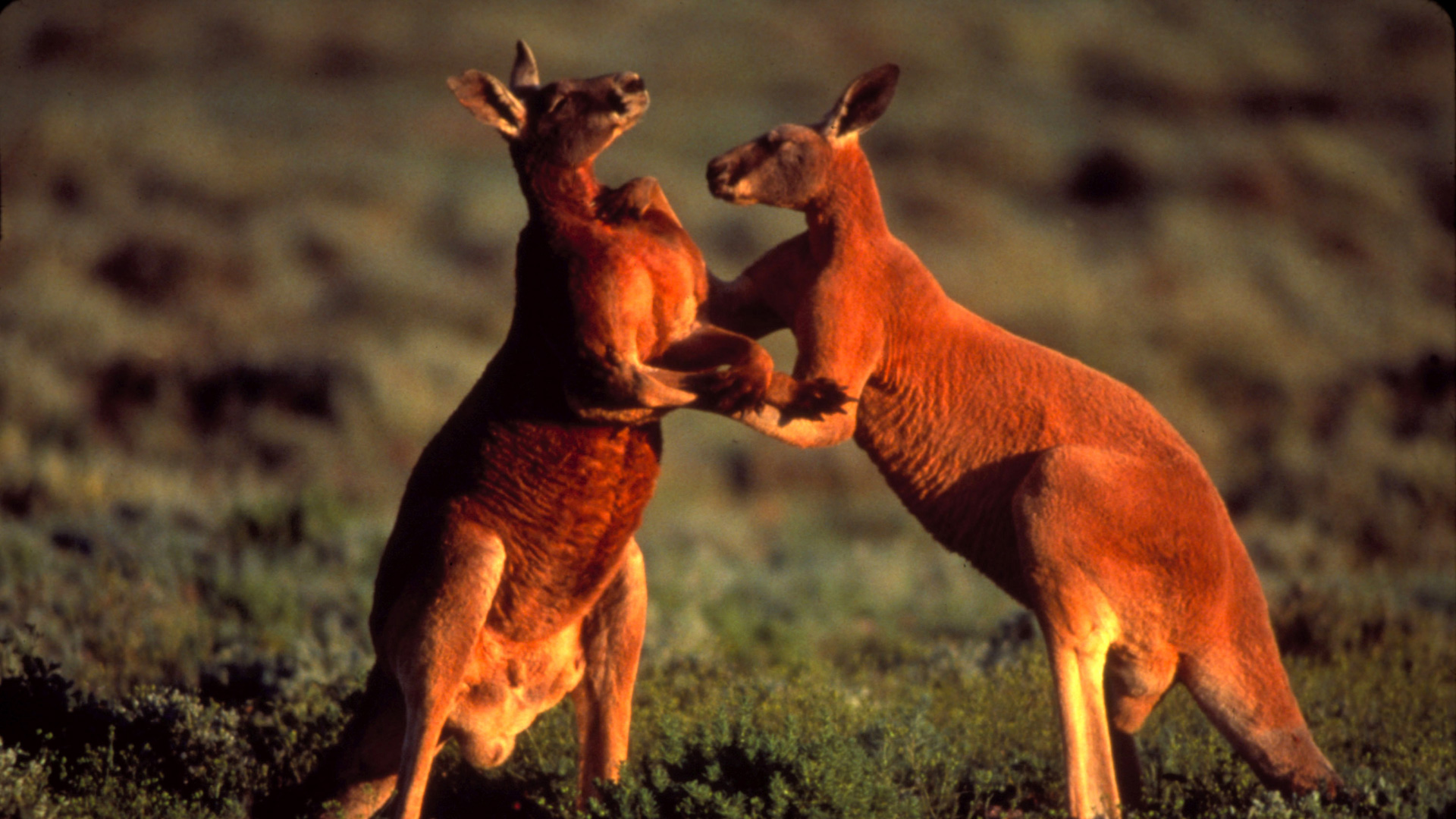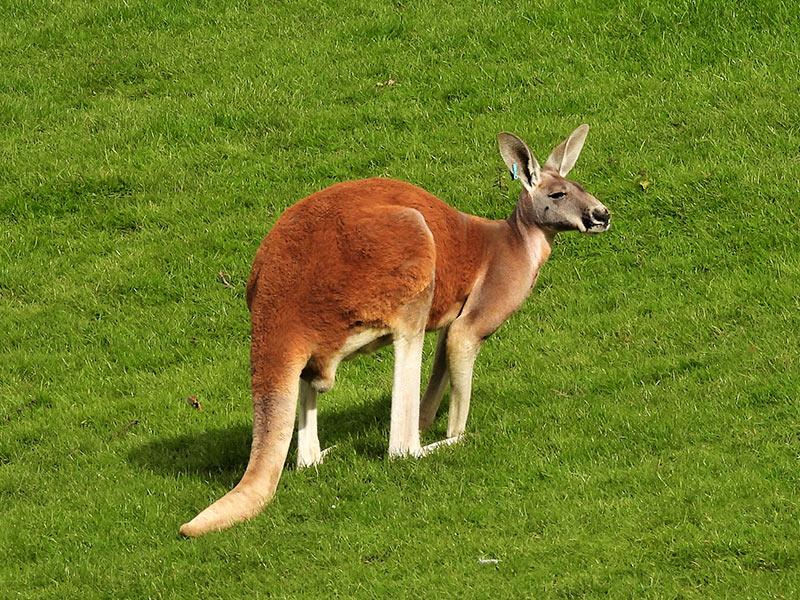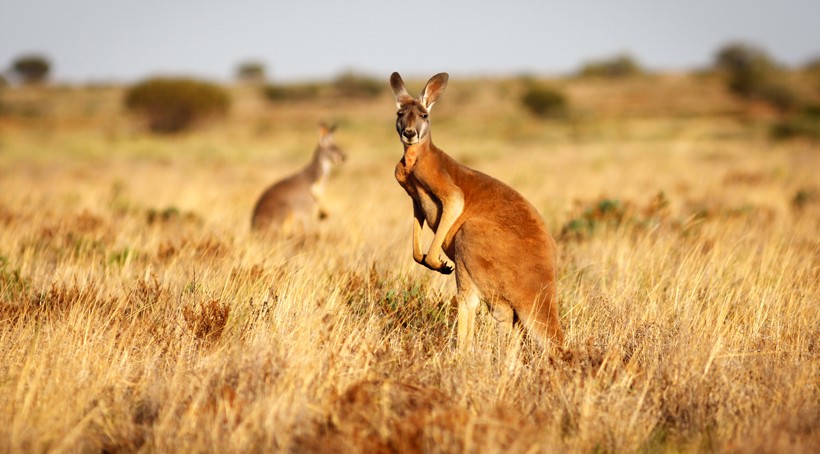Welcome to our article exploring the captivating world of the Red Kangaroo! As one of Australia’s most cherished icons, this fascinating marsupial holds a special place in the hearts of Australians and visitors alike. From its proud status as the largest marsupial on Earth to its significance as a symbol of Australian wildlife, the Red Kangaroo embodies the unique spirit of this extraordinary country.
Australia is renowned for its diverse and extraordinary wildlife, and the Red Kangaroo stands out as a remarkable representative of this natural heritage. With its distinctive red fur and powerful physique, the Red Kangaroo is unmistakable. Let’s delve into the intriguing characteristics and behaviors that make this kangaroo species truly remarkable.
But it’s not just the physical attributes that make the Red Kangaroo so captivating. This incredible marsupial thrives in the harsh and unforgiving habitat of the Australian outback, displaying remarkable adaptations that have allowed it to survive in arid and challenging environments. Join us as we explore the secrets of the Red Kangaroo’s success in its harsh home.
In addition to its biological significance, the Red Kangaroo holds immense cultural importance in Australian society. Discover the symbolism and cultural significance associated with this iconic animal, from its representation in art to its role as a national emblem that inspires pride and admiration.
Finally, we will celebrate the enduring status of the Red Kangaroo as an emblem of Australia. From its role in promoting tourism to its invaluable contribution in preserving the country’s unique wildlife heritage, the Red Kangaroo continues to captivate the imaginations of Australians and visitors alike.
The Red Kangaroo: A Remarkable Kangaroo Species
When it comes to unique and extraordinary kangaroo species, the Red Kangaroo takes the spotlight. As the largest marsupial in Australia, this iconic creature stands out with its impressive size, physical attributes, and fascinating behavioral traits.
Let’s delve into some remarkable facts about the Red Kangaroo that make it truly exceptional among its kangaroo counterparts:
- Size: Red Kangaroos are known for their immense size, with males weighing up to 90 kilograms (198 pounds) and standing tall at around two meters (6.5 feet). Females are relatively smaller, weighing approximately 30 to 40 kilograms (66 to 88 pounds).
- Physical Attributes: This kangaroo species showcases unique physical adaptations that allow it to thrive in the harsh Australian outback. Its powerful hind legs enable it to cover vast distances with incredible speed, reaching running speeds of up to 60 kilometers per hour (37 miles per hour). Additionally, their long and muscular tails provide balance and support during hopping.
- Cranial Characteristics: The Red Kangaroo possesses distinct cranial features, including a broad and elongated face, large and forward-facing eyes, and delicate nasal bones. These adaptations contribute to its sensory capabilities, allowing it to navigate its environment effectively.
- Behavioral Traits: Red Kangaroos exhibit fascinating social dynamics and behavior. They are predominantly nomadic, living in loosely associated groups known as “mobs.” These mobs primarily consist of females and their young, along with a few dominant males.
This exceptional kangaroo species captivates both locals and visitors alike, offering a glimpse into the diverse wonders of Australian wildlife.
The Red Kangaroo: Thriving in the Outback Habitat
Australia’s outback is home to some of the most unique and diverse wildlife in the world. Let’s explore the fascinating kangaroo habitat and how the Red Kangaroo has evolved to survive in the outback.
Adaptations and Survival Strategies
The Red Kangaroo has several adaptations that enhance its chances of survival in the outback habitat. These include:
- Nocturnal Behavior: The Kangaroo is primarily active during the cooler hours of the night, reducing water loss and heat stress during the scorching daytime temperatures.
- Social Structure: Kangaroos form large social groups known as mobs, which offer protection from predators and allow for better food and water acquisition.
- Breeding Patterns: The Kangaroo has a unique reproductive strategy known as embryonic diapause, which allows females to delay the development of embryos until favorable conditions, such as abundant food and water, are present.
Red Kangaroo Habitat Conservation
Conserving the Red Kangaroo’s habitat is crucial for the survival of this iconic species and other outback wildlife. Efforts are underway to protect and preserve the outback environments through measures such as national parks, wildlife sanctuaries, and sustainable land management practices.

The Red Kangaroo: Behavior and Social Structure
Understanding the behavior and social structure of the Kangaroo provides fascinating insights into the lives of these iconic Australian marsupials. Known for their solitary nature and unique reproductive strategies, the Kangaroo exhibits a complex set of behaviors that contribute to its survival in the harsh Australian outback.
One of the most notable behaviors of the Kangaroo is its preference for a solitary lifestyle. Unlike other kangaroo species, Kangaroos primarily live and forage alone, dispersing themselves across the vast landscapes of the outback.
The Red Kangaroo also establishes a dominance hierarchy within its social groups. Males engage in ritualized displays of aggression, using their powerful hind legs to box and kick rivals. The dominant male, known as the “boomer,” asserts control over a group of females, called “flyers.” This hierarchical structure ensures reproductive success for the dominant male, while the females benefit from the protection and resources provided by the boomer.
During mating season, Red Kangaroos employ a unique reproductive strategy known as embryonic diapause. This adaptation ensures that the young kangaroo is born into an environment that can support its growth and survival.
“The Red Kangaroo’s solitary nature, dominance hierarchy, and unique reproductive strategies are some of the remarkable behavioral traits that contribute to their survival in the challenging Australian outback.”
The Red Kangaroo: Symbolism and Cultural Significance
The Kangaroo holds a special place in Australian society, representing both the unique wildlife of the country and the national pride associated with this iconic animal. Its symbolism transcends its physical attributes, becoming a powerful cultural emblem that resonates with Australians from all walks of life.
One of the reasons for the Red Kangaroo’s cultural significance is its association with the Australian outback, which holds a deep meaning in the country’s identity. The vast and rugged landscape of the outback is often seen as a symbol of Australia’s pioneering spirit and resilience, and the Kangaroo is seen as a representative of this unique environment.
“The Red Kangaroo embodies the essence of the Australian outback, its adaptability and survival against harsh conditions. It symbolizes strength, endurance, and freedom, qualities that are highly valued in Australian culture.”
This cultural significance is further reflected in the representation of the Kangaroo in various forms of art. From Indigenous dreamtime stories and rock art to contemporary paintings and sculptures, the Red Kangaroo serves as a subject that captures the imagination and pride of Australian artists and their audiences.
To further understand the symbolism and cultural significance of the Red Kangaroo, let’s explore some key examples:
Kangaroo as a national symbol:
The Red Kangaroo is represented on the Australian coat of arms alongside the emu. Symbolizing the country’s unique fauna and character. This distinction highlights the cultural importance of the Kangaroo as a national emblem with deep historical roots.
Popular culture references:
The Red Kangaroo has made appearances in Australian literature, films, and even as characters in children’s books. These references further solidify its place in popular culture and its contribution to the country’s national identity.
| Artworks | Examples |
|---|---|
| Paintings | “Red Kangaroo at Simpson’s Gap” by Albert Namatjira |
| Sculptures | “The Big Red Kangaroo” in Australia Zoo |
| Literature | “Dot and the Kangaroo” by Ethel C. Pedley |

The Red Kangaroo: Conservation Efforts and Threats
Protecting the Kangaroo population is a crucial endeavor in ensuring the preservation of Australian wildlife. Several conservation efforts have been implemented to safeguard these iconic marsupials and address the threats they face in the wild.
Conservation Efforts:
- Establishment of Protected Areas: National parks and reserves have been created to provide safe habitats for the Kangaroo. Allowing them to roam freely and thrive.
- Research and Monitoring: Scientists and wildlife experts conduct extensive research and monitoring programs to study the behavior, population dynamics, and health of Red Kangaroos, gaining valuable insights for effective conservation strategies.
- Habitat Restoration: Restoration efforts focus on regenerating degraded habitats, restoring essential vegetation, and providing food and shelter for the Red Kangaroos.
- Community Involvement: Engaging local communities and raising awareness about the importance of conservation plays a crucial role in protecting the Kangaroo. Collaborative initiatives aim to promote conservation-friendly practices and reduce human-wildlife conflicts.
The Red Kangaroo: An Enduring Icon of Australia
The Red Kangaroo, a remarkable species and the largest marsupial in existence. Holds a special place in the hearts of Australians. Its representation in Australian culture, art, and popular media. Only further solidifies its status as an enduring emblem of the country.
Besides its symbolic significance, the Kangaroo plays a vital role in promoting tourism in Australia. The chance to observe a Red Kangaroo bounding across the breathtaking landscapes of the outback is a cherished experience that showcases the beauty and diversity of Australian wildlife.
Preserving the Red Kangaroo population is not only crucial for maintaining its symbolic and touristic value but also for safeguarding the country’s unique wildlife heritage. Through continued conservation efforts. Raising awareness about the threats they face. We can secure a brighter future for the Red Kangaroo and the entire Australian wildlife ecosystem.
Frequently Asked Questions
What is the Red Kangaroo?
The Red Kangaroo (Macropus rufus) is the largest marsupial species native to Australia. It is known for its distinctive reddish-brown fur and powerful hind legs adapted for hopping.
What makes the Red Kangaroo remarkable?
Stands out for its impressive size, with males reaching a height of up to 6 feet and weighing over 200 pounds. It is also known for its ability to cover great distances in the arid outback, often traveling over 15 feet in a single hop.
Where does the Kangaroo live?
The Kangaroo is predominantly found in the vast, arid regions of the Australian outback. Its habitat includes open grasslands, shrublands, and deserts, where it has evolved to survive in extreme temperatures and low food availability.
How do Red Kangaroos behave?
Red Kangaroos are solitary animals, usually only coming together in small groups or mobs during periods of abundant food or for breeding purposes. They have a complex dominance hierarchy within these groups, with larger and more dominant males asserting their authority.
Find out more on: https://tinyurl.com/3b23r86b












